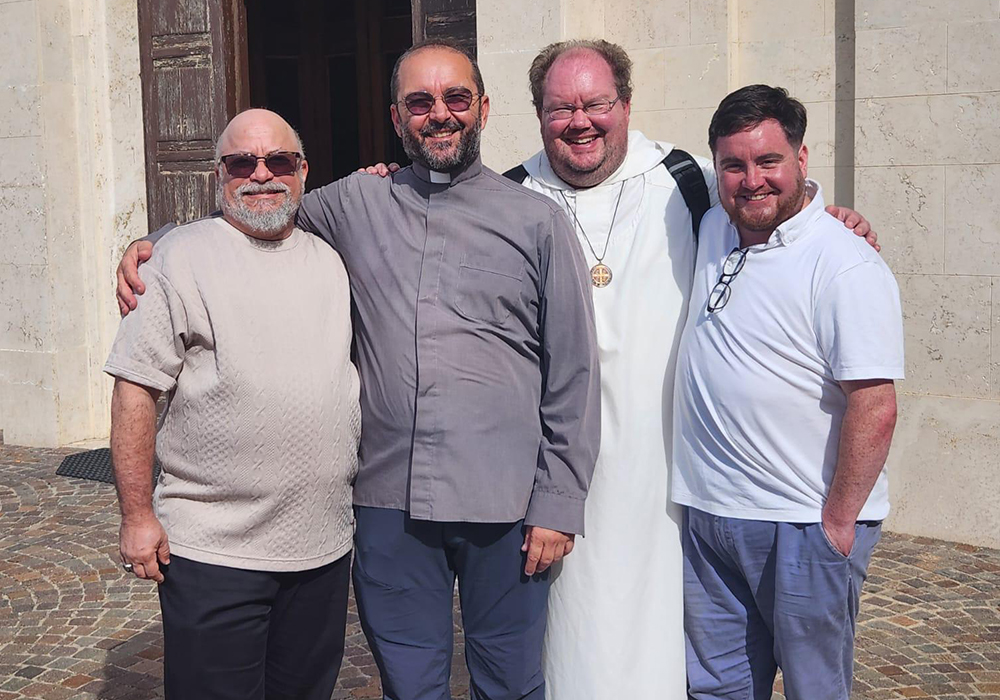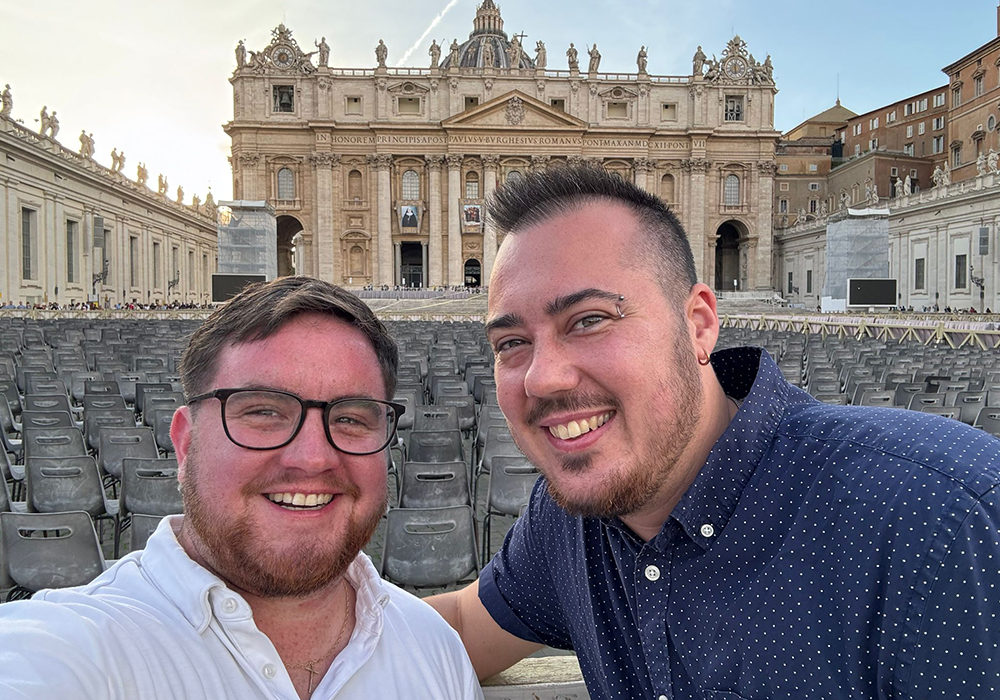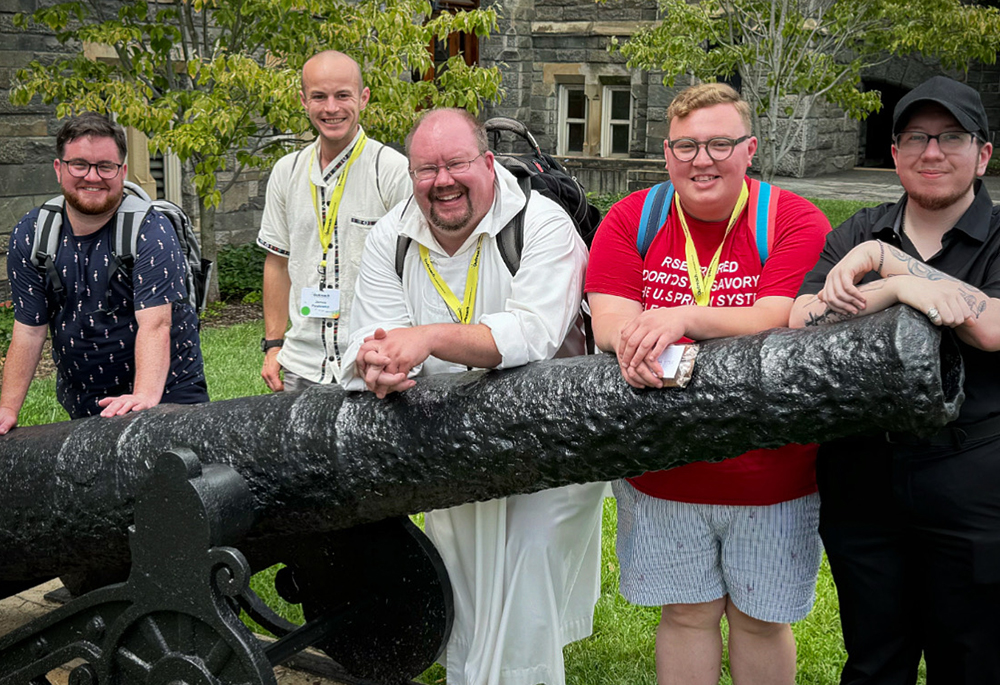
Pictured from left to right are: George White, James Pawlowicz, Br. Christian Matson, and two other fellow members of Matson's informal group for transgender men seeking religious life. (Courtesy of Greg Walton)
Thirty-one-year-old James Pawlowicz's journey of self-discovery began during his high school years, when he started to realize that he was a boy but he lacked the words and understanding to fully express this.
He found solace and a sense of belonging from the devout Chicago Catholic faith he was raised in that helped shape his identity. For a long time, he told NCR, he didn't have the language or cultural reference points to fully understand that he was transgender, a concept that at the time was not widely discussed or understood, especially in conservative religious communities.
As a child, Pawlowicz did not explicitly identify as a girl, and those around him often treated him according to societal expectations. Although he didn't yet use the word transgender or fully articulate his gender identity, Pawlowicz was beginning to live in alignment with how he felt inside. During those formative years, he presented fluidly, often appearing as male. He faced little opposition from those around him, as many people either didn't notice or chose not to question his gender presentation.
It wasn't until 2022, when he began exploring the possibility of joining a religious order as a brother, that his gender identity became a more complicated and challenging aspect of his life. Although he had medically transitioned and lived as male for many years and found acceptance in his personal faith community, this would be the first time he faced significant rejection based on his transgender identity.

James Pawlowicz (Courtesy of James Pawlowicz)
"It was when I wanted to join religious life, and actually disclosed to somebody that I was transgender, that I experienced actual rejection for being transgender. That's when it suddenly meant something to me to be transgender," he said. "I had to sort of give up that sense of just being a regular man and realize that it was not that fluid."
For eight months, Pawlowicz went through a discernment program with the Jesuits, where he said he felt a deep sense of peace and certainty that God was leading him toward a life of service within the church. However, as he grew closer to making a formal commitment to religious life, he also recognized the need to be fully honest about his gender identity. He could no longer hide or suppress this essential aspect of who he was.
"I got to the point where I knew that I was 100% in it, that that's exactly what I wanted. I was ready to sell everything and really commit my whole life with the Jesuits to serving the people of God," Pawlowicz said. "I also knew that keeping it a secret forever would never work for me. I am just very honest in my core. It's just something that's very much a part of me."
When he finally came out as a transgender man to his vocation mentor, the response was a mixture of personal support and institutional rejection. His mentor understood, offering Pawlowicz compassion and encouragement. However, in a brief phone call, the Jesuits' vocations director broke his dream of joining the congregation. "You have to be born a male and remain a male to join religious life at all," he said, according to Pawlowicz. That phone call marked the end of Pawlowicz's discernment process.
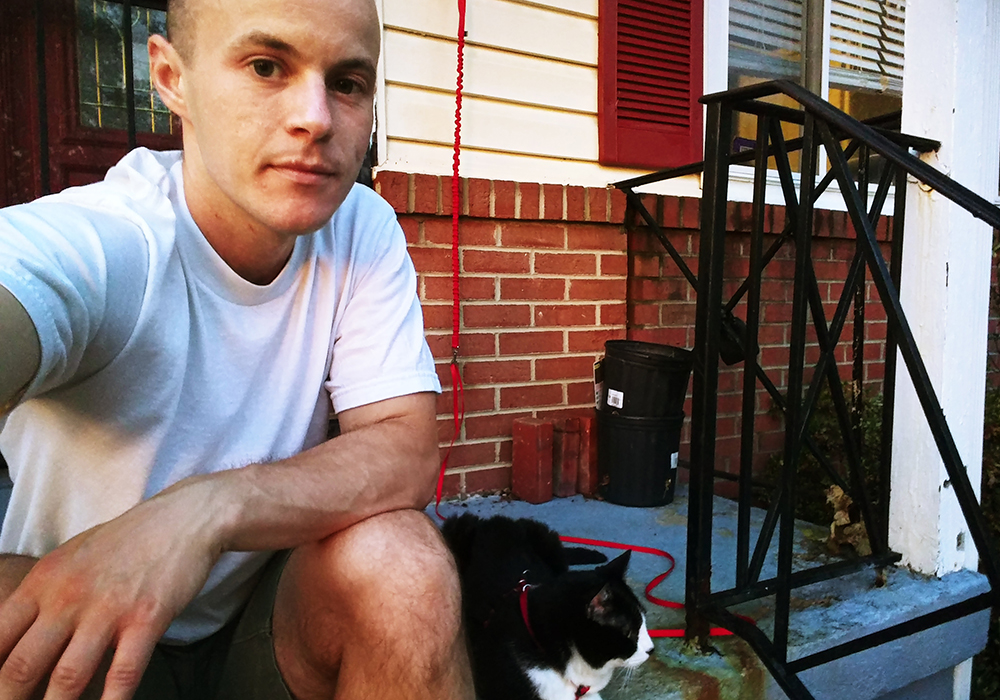
James Pawlowicz (Courtesy of James Pawlowicz)
"It's heartbreaking. Just sad," he said, recalling that day. "For that whole eight months of discernment, I had balanced this excitement and exhilaration with the realism of thinking it wouldn't actually be an option. But I was trusting God and kind of putting that on a shelf. I really got my hopes up. I really let myself dream and I kind of came crashing down."
Pawlowicz said he also reached out to other religious orders, including the Franciscans, who offered him the same answer: Religious life was not open to transgender individuals under the current teachings of the Catholic Church. While these repeated rejections were difficult to bear, he found strength in his broader faith community. His local parish — where he attends daily Mass — continued to support him, offering him opportunities to serve and remain engaged in the life of the church. He also found new ways to live out his faith through his work in nonprofit organizations and his involvement in multiple ministries.
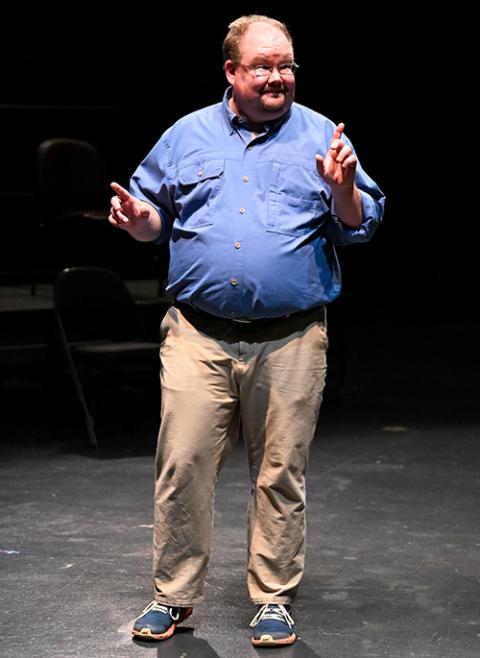
Br. Christian Matson, who is believed to be the first openly transgender religious brother in the Catholic Church (Courtesy of Dusty Layne)
Pawlowicz's vocational mentor continued to accompany him spiritually, and thinking that it might bring him solace and solidarity, he put him in touch with Br. Christian Matson, a transgender religious diocesan hermit from Lexington, Kentucky. Before becoming a diocesan hermit in 2022, Matson — who is believed to be the first openly transgender brother in the history of the Catholic Church — had tried to join the Jesuits, speaking with multiple Jesuit vocation directors between 2011 and 2018. He too, like Pawlowicz, after a lengthy discernment process in which multiple Jesuit priests told him he was an "excellent" candidate, had been rejected because of his "medical history" as a trans man.**
These rejections, while painful, did not diminish Matson's determination. In an interview with NCR, he recounted how every year between 2015 and 2018, his Jesuit spiritual director at the time would plead his case with the provincial leadership in New York, only to be met with the same refusal. Matson said the reasons given over seven years of conversations were primarily twofold: a concern about incorporating someone with a "complex psychosexual history" and questions about whether Matson, having fought so hard for his identity, could live in obedience under Jesuit superiors. Matson felt these judgments were misguided and frustrating, as they did not reflect his true willingness to serve.**
"I felt like I wasn't really being listened to, that I was being treated as — I wasn't being asked for what I actually thought or believed," he said. "Just because I've fought to be recognized for who I am and received medical treatment that was appropriate doesn't mean I'm not willing to be obedient." In the rejection email Matson received from one of the Jesuit vocation directors, he'd been told that "the Jesuits are not a place to hide from the slings and arrows of public ministry."
"The assumption appeared to be that I wanted to enter the Jesuits, but kind of not be visible and hide. I responded by saying, 'Well, if I wanted to hide, I wouldn't be looking to join the Jesuits,' " he told NCR.

Daniel Quinan, Minnesota-based canon lawyer (Courtesy of Daniel Quinan)
Despite the setbacks, Matson's dedication remained unwavering. He continued to explore his vocation and found comfort in the idea that his identity as a religious brother was intrinsic to his being, a calling that could not be easily dismissed. His resolve was further strengthened by an invitation from an Episcopal priest friend, who offered him the possibility of becoming an Episcopal priest. Matson declined, citing his firm belief in the Catholic Church's sacramental vision and apostolic authority.
Eventually, after being accepted by Bishop John Stowe of Lexington, Kentucky, in 2021, Matson entered the novitiate, and in 2022 made his first vows as a diocesan hermit for one year, and then renewed them for three years in 2023.** Over the past year, Matson has become a point of contact for other Catholic transgender men discerning religious life. This small, informal network, which Matson said came to life "organically," has provided mutual support and fellowship through monthly Zoom meetings and annual in-person gatherings. Matson said the group was composed of men deeply committed to their faith, some of whom have suffered persecution for their trans identities.
"Instead of assuming that all of us are people who are out to undermine the church, or fundamentally change the church in its very nature and turn it into some kind of social justice, woke NGO instead of the body of Christ, people need to realize that we are there for the Eucharist," said Matson. "We're there for Christ. This is why we're in the church and why we're not just going and making our entire lives about being trans. Our lives are all centered in Christ."
Advertisement
In a lengthy interview with NCR, Daniel Quinan, an experienced Minnesota-based canon lawyer, reflected on the fact that his direct professional involvement with such cases is rare, with only a handful of encounters over his career. Nevertheless, the growing questions around transgender Catholics and their pursuit of religious vocations are subjects he finds increasingly relevant. He has begun to explore these topics more deeply, both personally and in his writings.
Quinan explained that each religious community operates under its own specific constitution or law, often approved by the Vatican. This means that each case would need to be assessed based on the legal framework governing the specific order. Generally, canon law and religious communities still adhere to a traditional understanding of biological sex rather than gender identity, which can make the rejection of transgender candidates legally defensible. However, Quinan emphasized that such situations should ideally involve full transparency early in the discernment process to ensure all parties understand the potential obstacles.
Regarding the broader possibility of admitting transgender Catholics into religious and consecrated life, Quinan sees no inherent theological or canonical reason to entirely exclude them. He refers to foundational principles in canon law, such as Canon 210, which speaks to the universal call for all of Christ's faithful to pursue holiness and Canon 597 which outlines the qualities required for admission into religious life. He argues that transgender Catholics, like all Catholics, have the right and duty to discern a life dedicated to the evangelical counsels of poverty, chastity and obedience.
"I think it would be a serious error to argue that having a transgender experience is radically incompatible with (and therefore automatically disqualifying from) any and all forms of religious life," he said. "Therefore, on that very general level, I think admitting transgender persons to consecrated and religious life is certainly possible; but then we have to grapple with all of the concrete realities in each particular case, which may not be anywhere near as simple. Everything will hinge on the requirements governing the specific community or form of religious life, as well as the very subjective question of a candidate's compatibility with a given community."
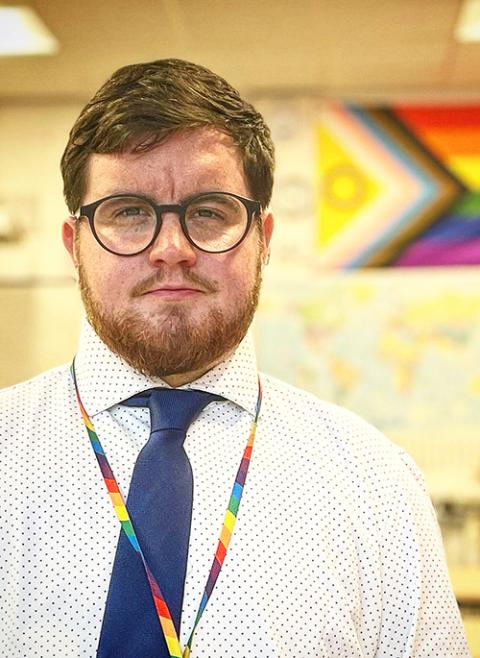
George White at St Paul's Catholic School in Leicester, United Kingdom, in February 2024 (Courtesy of George White)
George White, a 30-year-old religion teacher at St. Paul's Catholic School in Leicester, United Kingdom, is a member of the informal group with Pawlowicz and Matson. Raised without religious influence, his path to Catholicism began at the age of 16 when, inspired by the support of teachers at his Catholic secondary school, he chose to be baptized alongside his twin sister. That pivotal moment marked the beginning of a spiritual and personal evolution that would shape the course of his life.
At 23, White began to come to terms with being transgender, a process that coincided with his growing awareness of the Catholic Church's teachings on sexuality. Although his understanding of church doctrine was rooted in his studies at Jesuit Heythrop College in London, White felt a strong call to priesthood with the Salesians of Don Bosco, a congregation known for its educational mission.
However, as he came to terms with his gender identity, he realized that becoming a priest within the Catholic Church would be highly unlikely. Despite this, his spiritual journey has been guided by figures within the church who provided support, even if they didn't fully understand the unique challenges he faced. One day, a Salesian priest, reassured White that his questioning of gender was not something to bring to confession, a moment that solidified White's sense of belonging within the church.
Although White has never formally applied for religious life, he told NCR he had a strong desire to join the Salesians. While responses from within the order have been supportive, they reflect the church's current stance on transgender issues, leaving him to reconcile his calling with the reality of church policies. Nonetheless, White finds fulfillment in his vocation as a teacher, where he sees his work as a form of ministry, helping students navigate complex religious and LGBTQ-related ethical questions.
Today, White believes to be the only openly transgender religion teacher in a Catholic school in the U.K. Just recently, he wrote an entire chapter section about LGBT inclusion in U.K. Catholic schools in a groundbreaking academic volume titled Trans Life and the Catholic Church Today.
At the 2024 Outreach conference, a gathering of LGBTQ+ Catholics from multiple countries, White connected in person with Matson and other Catholic transgender men discerning their vocations within the church. He said this experience reignited his sense of community and purpose. "Meeting them certainly reminded me that I've probably pushed down my identity as a trans person. It's reminding me that these are questions and thoughts that I still have and that they are worth exploring. There's now a forum for me to do that and it's really great."
On Oct. 23 — thanks to Fr. Andrea Conocchia, an Italian priest who has brought LGBTQ Catholic people to meetings with the pope before — White, Matson and two other trans Catholic men (including NCR contributor Maxwell Kuzma) met briefly with Pope Francis in person after a general audience in St. Peter's Square. White and Matson wrote personal letters to the pope, which they inserted into the book Trans Life and the Catholic Church Today as their gift to the pontiff. After they introduced themselves as trans Catholics, Francis shook their hands, blessed them and thanked them. "It's hard to describe how I felt," said White to NCR after the meeting.
*This story has been updated to identify Pignatella in photos, and to add a photo of White and Matson meeting the pope.
**This story has been updated to clarify Matson's journey to become a religious diocesan hermit.

